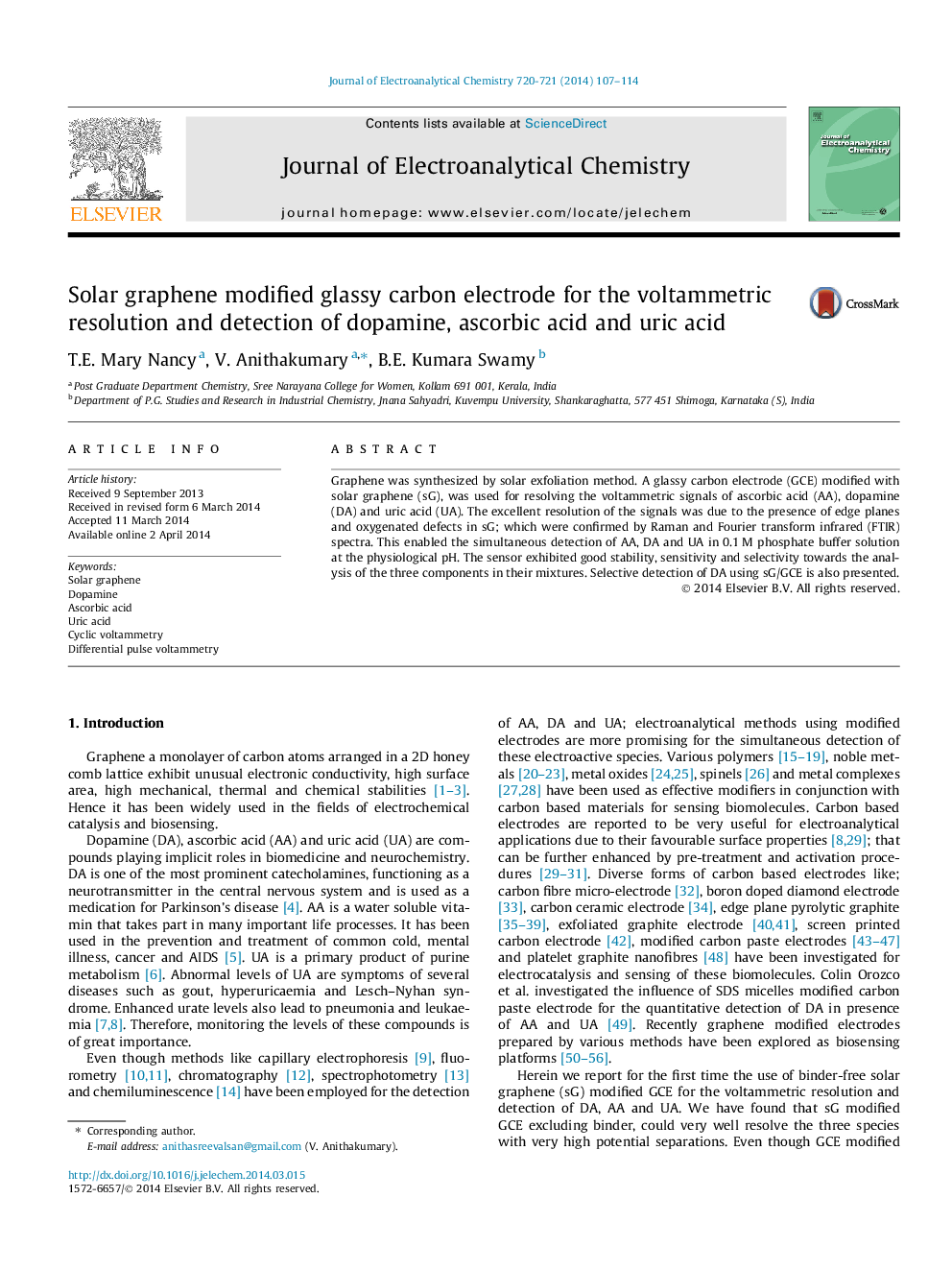| Article ID | Journal | Published Year | Pages | File Type |
|---|---|---|---|---|
| 218818 | Journal of Electroanalytical Chemistry | 2014 | 8 Pages |
•Graphene was prepared by an eco friendly, green, economic and rapid solar exfoliation method.•Solar graphene (sG) has edge planes and oxygenated defects.•These defects aid in the voltammetric resolution and detection of biomolecules.•sG exhibits excellent electrocatalytic activity for the detection of dopamine, ascorbic acid and uric acid.•The detection limit for the selective detection of DA at sG/GCE was 2.8 μM.
Graphene was synthesized by solar exfoliation method. A glassy carbon electrode (GCE) modified with solar graphene (sG), was used for resolving the voltammetric signals of ascorbic acid (AA), dopamine (DA) and uric acid (UA). The excellent resolution of the signals was due to the presence of edge planes and oxygenated defects in sG; which were confirmed by Raman and Fourier transform infrared (FTIR) spectra. This enabled the simultaneous detection of AA, DA and UA in 0.1 M phosphate buffer solution at the physiological pH. The sensor exhibited good stability, sensitivity and selectivity towards the analysis of the three components in their mixtures. Selective detection of DA using sG/GCE is also presented.
Graphical abstractCyclic voltammograms at various scan rates for the simultaneous detection of AA, DA and UA in 0.1 M phosphate buffer solution at the physiological pH with appreciable potential separations.Figure optionsDownload full-size imageDownload as PowerPoint slide
